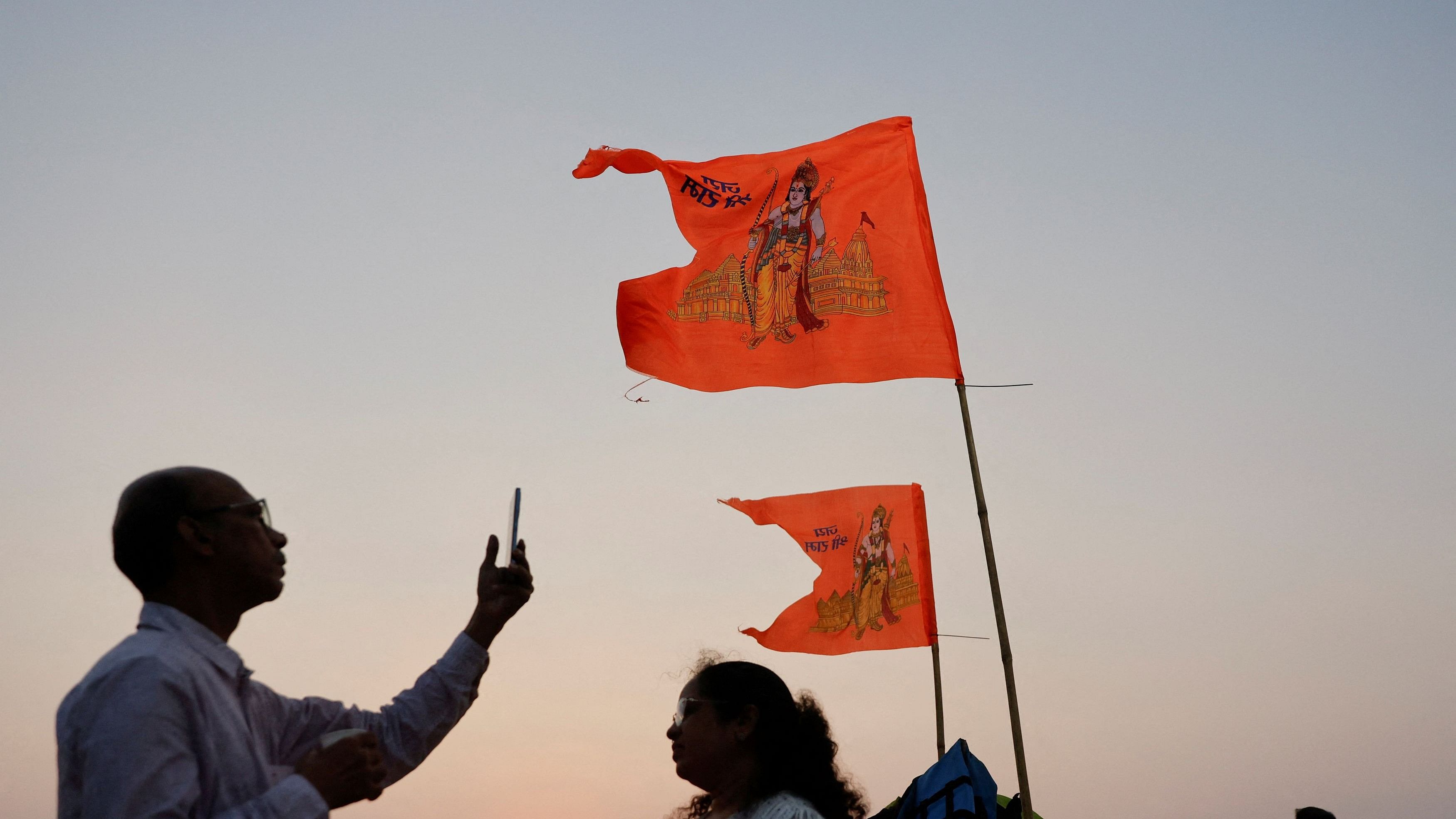
Flags of Lord Ram fly, ahead of the consecration ceremony in Ayodhya.
Credit: Reuters File Photo
Bengaluru: Hampi, where the Tungabhadra river is coursing through its rocky terrains in the newly formed Vijayanagara district in Karnataka, is charged with exuberance with the revival of the Ram Temple in Ayodhya.
With the consecration of Ram Temple taking place on January 22, the historic region of Hampi has become all the more important as it proved a turning point in the life of Lord Rama kindling the hope of getting back his wife Sita, who was abducted by the demon king of Lanka, Ravana.
Anjanadri, the hill of Anjana where Hanuman was born, is located in Koppal district just a few kilometers away from the capital of Vijayanagara empire. Hanuman was an ardent devotee of Lord Rama.
There is an ancient Hanuman temple on top of the hill, which is home to a variety of monkeys including Langurs. One cannot miss the expansive Tungabhadra with ancient structures built by the Vijayanagara dynasty in the middle of it.
The epic Ramayana elaborates about the unending and unwavering devotion of Sugreeva's minister Hanuman towards Lord Rama.
The Anjanadri temple management in Koppal district has made elaborate arrangements to celebrate the consecration of the Ram Temple with tourists and devotees flocking to the shrine where it is decked up with lights.
The traditional lamps will be lit at the temple for two days from Sunday and special poojas will be performed, according to the temple management.
The entire hill is decked up with decorative lights and many temporary shops have come up in view of the festivities.
The connection between Hampi and Ayodhya is deep. For, Hampi is nothing but a distorted name of the Pampa region, the very capital of the monkey kingdom of Kishkindha, which was ruled by the two valorous rulers, Vali and Sugreeva.
It's interesting to note how Pampa became Hampi. In Kannada, the region is called Hampe, which was previously pronounced as Pampe, as a mark of respect to 'Pampa'.
There is a massive rectagular ancient temple-tank with beautiful steps which is called Pampa Sarovara. It is located right at the foothills of Chinchalakote hillock between Anjanadri hill and Rama cave.
A few kilometres away from Anjandri is the Rishyamooka hill where Sugreeva, the monkey king lived in exile after being driven by his brother Vaali.
It is at this cave at the foothills of the Rishyamooka just across the Tungabhadra river where Rama and Sugreeta took an oath of friendship on fire.
The region also has a place called Anegundi, which is named after Angada, son of Vaali, who is believed to have ruled it.
"There is absolutely no doubt that Hampi is the Kishkindha Kshetra mentioned in Kishkindha Kanda and Sundara Kanda of Ramayana. Professor A Sundara has proved that Hampi and its surroundings suit Kishkindha Kshetra detailed in the Ramayana," historian Raghavendra Rao Kulkarni told PTI.
An archaeologist in the Archaeological Survey of India told PTI that archaeologists and historians across the country are unanimous that Hampi is the Kishkindha Kshetra.
"You can find many pre-historic cave paintings in this region. There are many archaeological evidences to prove that this place had been inhabited for about 1.5 lakh years," Kulkarni explained.
He added that Anjandri Hill had been a well-known place even before the Vijayanagara dynasty came up.
The historian also noted that this fact was known to the followers of the Sri Vaishnavas and Madhwa sects, who considered Hampi as the most sacred place.
Founded by Madhwacharya, the followers of the Madhwa sect who consider Lord Hanuman as the second most important figure, Kulkarni said that the faith even treats Madhwacharya as an incarnation of Hanuman.
After eliminating Vali, Rama stayed in a cave for two months waiting for Sugreeva to fulfill his promise of searching for Sita, who was abducted by Ravana. That cave has the footprints of Lord Rama in the middle of a lotus carved on a rock.
Ramayana mentions that so long as the river (believed to be Tungabhadra) and some other streams were in spate, Rama did not disturb Sugreeva, but once the swollen river subsided, he sent his brother Lakshmana as an emissary to remind Sugreeva to respect his promise.